The techniques are advancing and these day i rather chooce the strength of a lightbulb according to its louminous flux (often abbreviated lm) rather than it watt amount, as the new LED lamps vary so much in how much light they let out even if the watt is showing the same. So look for a lightbulb according to how much ligth it shines out.
But many people are still used to look for the right socket and the right amount of watt to find a new lightbulb, so we are going to sort out how to find an equal LED bulb to your incandescent bulb in the tables below.
LED-bulbs , low energy bulbs and halogen bulbs are all more energy effective than the old incandescent bulbs, it means they use less amount of energy but still give off same amount of light or more.
I am going to show you what you should look for in louminous flux (lm) if you search for a LED light bulb that should be similar to your old incandescent bulb you have got now.
(All the values in this table are average. The span depends upon that different bulb types give slight different values. The difference can not be picked up with the naked eye though. the loumenous flux for the reflection lamps are only valid inside the 90 degree ray of light. GU 5.3 and GU 10 are different sockets.)
Incandesscent Bulb (Watt) | Halogen-, Low energy- and LED-bulbs (Lumen) |
15 w | 120-135 lm |
25 w | 220-250 lm |
40 w | 410-470 lm |
60 w | 700-805 lm |
75 w | 920-1055 lm |
100 w | 1330-1520 lm |
200 w | 3010-3450 lm |
Reflector bulb 12 V, GU 5.3
Older Halogen bulb (Watt) | LED- low energy and effective |
20 w | 180-200 lm |
35 w | 300-330 lm |
50 w | 540-595 lm |
Reflector Bulb 230 V, GU 10
Older Halogen Bulb(Watt) | LED-, Low energy och effective |
20 w | 90-100 lm |
25 w | 125-140 lm |
35 w | 200-220 lm |
50 w | 300-385 lm |
75 w | 500-605 lm |
Once i have choosen what amount of luminous flux (lm) i want my bulb to have, i want to also just quickly check that the colour temperature is right too. The colour temperature is measured in K = Kelvin and the higher the amount the bluer and colder the light will be that shines from the bulb. Below you can see a picture where you can measure roughly what colour the light will have from the specific bulb you have choosen.
For a cosy litght, choose the lower values where the bulb will shine with a more yellow-orange light and for working, choose a higher value so that the momentum is kept up by the desk or in the kitchen etc. Very important these days when a lot of us work from home! A light bulb with the right colouring can make all the difference to your day!
Below the picture we have gathered up a few recomendations on how many kelvi a light could have in the different settings.

Holek arranged this picture; By Hołek - Own work, CC BY-SA 2.5 pl, https://commons.wikimedia.org/w/index.php?curid=1570047
Reading light
Select an LED light source with an output of 430-1000 lm (40W-75W) and a colour temperature of 2700-4000 kelvin.
Light for Dining
LED lamps with a luminous flux of 430-800 lm (40W/60W) with a colour temperature between 2500 and 3000 Kelvin. Do you want extra good light shall you choose a light bulb with 1000 lumens. We recommend that you buy dimmable light bulbs for your lamp, for those cozy and romantic dinners, and why not add a real candle to the occasion too!
General lighting
LED lamps with a luminous flux between 430 and 800 lumen (40W/60W) and a colour temperature between 2500 and 3000 kelvin. If you need a brighter light in the room you should choose a light bulb with the value of about 1000lumen.
Light for Working in
Select a LED light bulb with a cool white light, which could be up to 4000 Kelvin, it increases the contrasts of what you are working with and keeps you more alert.
Bathroom lighting
Select an LED light bulb for general lighting in the bathroom with a luminous flux of 430-800 lumens (40W/60W) and a colour temperature of 2500-3000 kelvin. For a good makeup-light, we recommend a light bulb that provides up to 4000 kelvin, which increases the contrast in the face. We also recommend that the light bulbs are dimmable.
Kitchen light
LED light bulb with good colour rendition, 750-1000 lumens (40W-75W) and 2700-4000 Kelvin.
Dimmer-controlled lighting
All halogen lamps can be dimmed. Most LED light bulbs can also be dimmed. The color of the light of a halogen bulb, becomes warmer when you dim them but on most LED light bulbs, they stay at a constant light temperature (Kelvin) regardless of how you dim them. This has led to that we now have LED bulbs that are called dim-to-warm, which means on those bulbs the color of the light will change as well as the strength of the light. They are acctually very effectime and very popular!
Cosy lighting and Window lighting
LED lamps with a luminous flux of 125-470 lumens (15W-40W) and a colour temperature of 2500-3000 kelvin.
The phasing out of the old (incandesent) light bulbs
Low energy and LED bulbs will replace miljons bulbs in a the years to come, and the sooner you switch, the more money you save. As well as doing the environment a big favor as the low-energy light bulbs and LED lamps both consume less energy and have a much longer life.
You can save a lot of money by replacing your incandescent bulbs for LED lamps. Replace 10 bulbs and it will save you about £ 500 a year. ( In sweden)
Good luck, I am sure you will manage to find a light bulb with the help of these charts and tips!
If you don´t or if you have a question, don´t hessitate to call us on +46 37250225!


-100x100w.png)
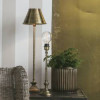
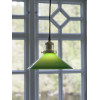



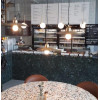

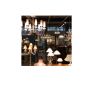


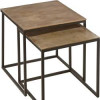




























-150x150w.jpg)



